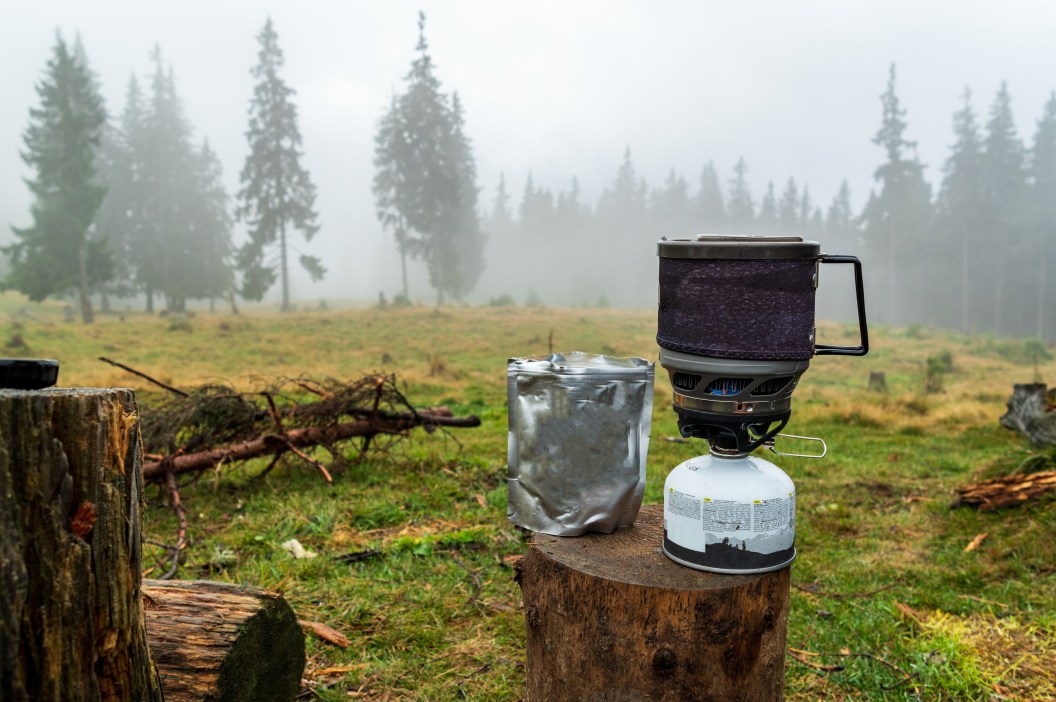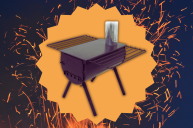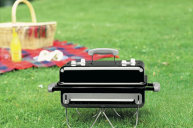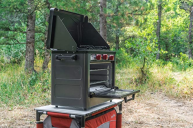Let's face it, heading out into the backcountry takes a lot of logistics, and when we leave the comforts of home behind there are a ton of challenges to face: what to pack, where to camp, where to use the toilet.
Food is a huge morale boost when out on the trail, and making sure you have the right way to prepare your foods is an important decision. Most of us don't want to leave hot meals behind while we're out in the backcountry, especially after a long day of hiking, fishing, or just taking in the great outdoors.
READ MORE: 10 Hacks to Make Backpacking Meals Taste Better
With so many stove options out there, it can be really difficult to make the right decision. The following tips and considerations will help you make a selection you're happy with.
1. Be Lightweight and Compact
When you're carrying all your belongings on your back, every ounce counts. Most of us wouldn't want to carry the same kind of stove on a backpacking trip that we would when car camping. For a backpacking trip, we likely aren't taking complex meals out and possibly only need to boil water, so the size of our stove can reflect that.
Many ingle burner stoves today come as small as 2" high by 5" wide, and some are even smaller. There are stoves that come with pots for boiling that weigh in at under a pound, so pretty light for all the comfort they provide. Most of them will fold up and come with a lightweight protective case for easy and safe storage in your pack.
2. Rely On Readily Available Fuel Sources
Consider what fuel options (butane, propane, or a mixture) are available in your area or the area that you're going to for your backpacking trip. Some types of fuels can be really challenging to find, and the last thing you want is to get to the town you're planning to buy fuel from and there isn't any available. Know how much fuel you'll need and check towns ahead of where you are if you'll have to resupply on your hike.
Another factor in fuel to consider is your expected elevation. Some fuels burn better at higher elevations than others due to lack of oxygen in the air, and this means more fuel is necessary at higher altitudes. Some stoves are also more effective in the cold, which often comes with altitude.
3. Easy to Light
There are a couple different ways that stoves light, and you want to get one you feel comfortable with lighting and make sure you practice before you head out into the backcountry. Some have an igniter attached while many others rely on an external flame source like a lighter or match. It's not bad practice to carry matches as a back-up option either way.
4. Be Mindful of Fire Safety
It seems like every summer the fires get more and more out of control, so making sure you have a safe stove and wind protection will decrease the chance that something goes tragically wrong in places where wildfires are a risk.
Many modern backpacking stoves come with a wind/heat screen of some sort, or a pot that incorporates wind protection, but be sure to reach the technical specs on your potential stove before you commit and make sure you have a way to protect it from wind. (As an added bonus, a wind/heat screen will direct the stove's heat upwards towards your pot so it works more efficiently.)
5. Think About How Much You're Cooking
If you're guiding a backpacking trip for a large group or heading out into the backcountry solo, this will likely have some impact on the right stove choice for you. Some options are a little bigger and heavier, but have more reliable functionality for large groups and stronger physical support for big pots when cooking meals for multiple people. Know that often the larger stoves will have a different fuel system that includes a pump and refillable fuel bottle, and can burn more types of fuels. Other stove options will be smaller and more compact, but allow for extremely quick boiling for smaller quantities of water.
One more aspect to consider is the ability to control your flame; this allows you to go from a simmer to a boil and will assist in conserving fuel. This feature isn't available on every model of stove, but if you want more control of your cooking or more precision over your fuel use, this may be worth considering.
6. Consider Going Stoveless
If all of the above seems like too much to consider, you don't want to worry about finding fuel, or you don't mind not eating hot food for a number of days, going stoveless might be the move for you (unless you're going somewhere awfully cold, in which case a hot meal and a hot cup of tea is a great way to warm up when you crawl into your tent at night).
It's definitely not as comfortable or luxurious as being able to cook up some pasta or make a hot coffee in the morning, but if you want to save the weight and not worry about fuel, it's worth considering. There are a number of foods that rehydrate well without heat (ramen, instant mashed potatoes, powdered refried beans, and plenty more) and there are instant coffee packets that dissolve in cold water too if you just can't imagine mornings without caffeination.
READ MORE: What to Wear Backpacking: Your Ultimate Guide to Layering




